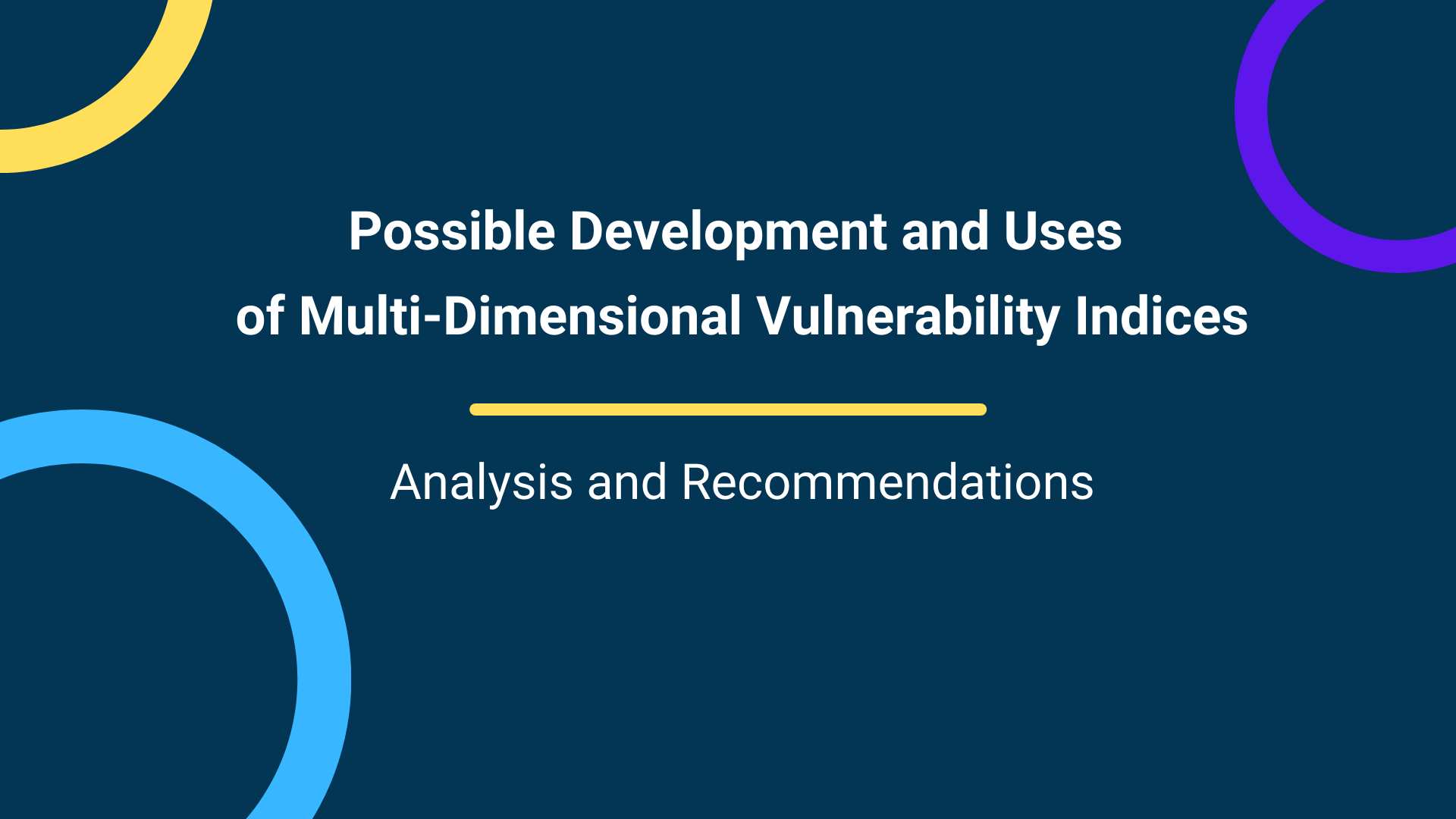- عربي
- 中文
- English
- Français
- Русский
- Español
Report: Multidimensional Vulnerability Index: Potential Development and Uses
In December 2020, in Paragraph 8(a) of Resolution 75/215 the UN General Assembly called on the Secretary General “to provide recommendations…on the potential development and coordination of work within the UN system on a multidimensional vulnerability index for small Island developing states, including on its potential finalization and use”. Such a multidimensional vulnerability index (MVI) would assess the vulnerability of small island states, and other countries, and should serve as a criterion for access to and allocation of concessional resources among countries.
While the vulnerability of countries has been recognized since the beginning of development economics as a major challenge, with an initial focus on vulnerability to exogenous trade shocks, it has become a stronger concern in recent decades with the increasing consequences of other types of shocks and global challenges, including climate change. Small island developing states (SIDS), traditionally vulnerable to trade shocks, are presently particularly vulnerable to climate change. The UN General Assembly has repeatedly underlined this vulnerability of SIDS and called both for an appropriate measurement of vulnerability and for international action to tackle vulnerability. At the same time, the UN Committee for Development Policy (CDP) uses a vulnerability index, as well as income-per-capita and a human assets index, as a criterion to identify the Least Developed Countries (LDCs), a process endorsed by the UNGA. In this global context, as in academic literature, vulnerability is related to exogenous shocks, and if it considered as a structural handicap (as it is by the CDP), all the development handicaps cannot be considered as “vulnerability”.






